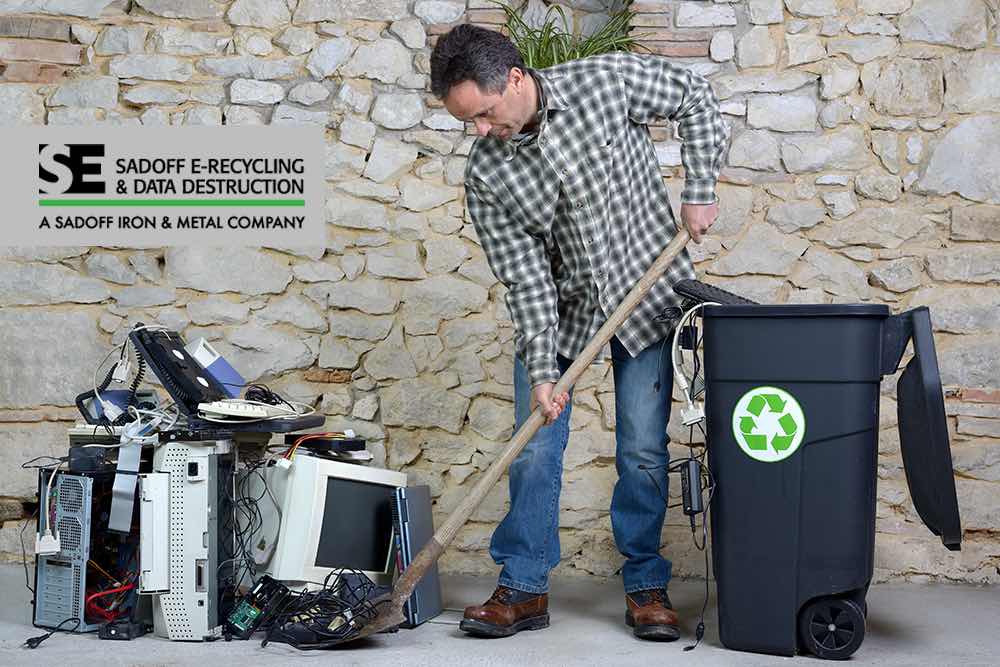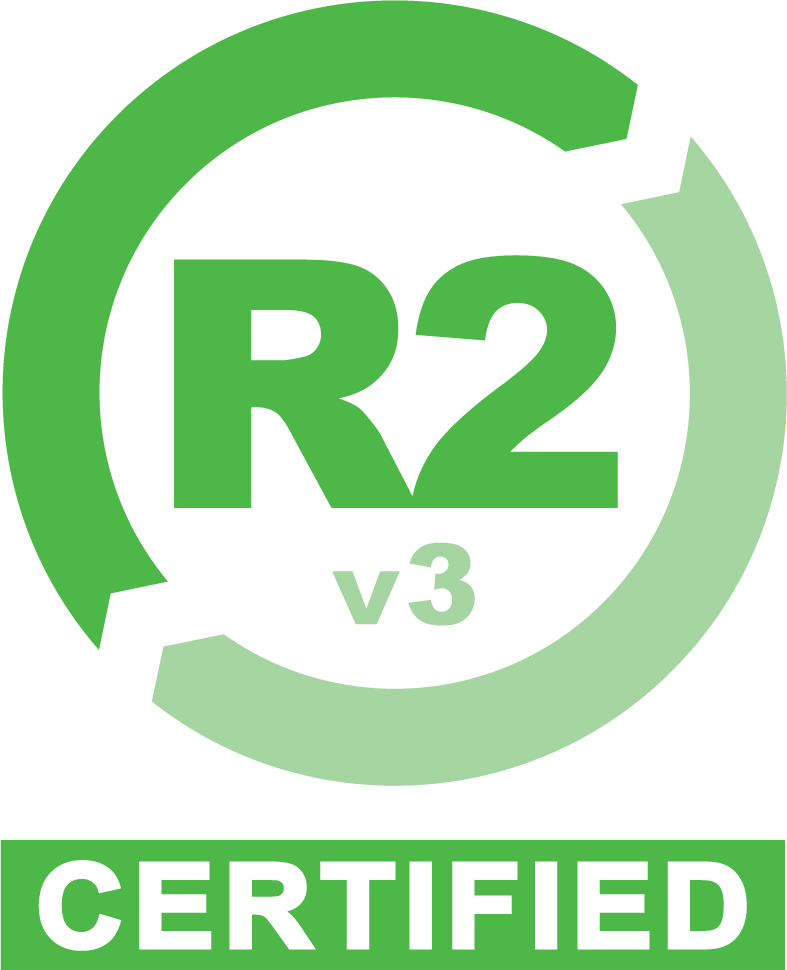The Current State of E-Waste Management: A Decade of Progress in Electronic Stewardship
 29
29 Apr
In July of 2011, the United States’ Interagency Task Force on Electronics Stewardship (ITES) published the National Strategy for Electronic Stewardship (NSES), a plan for better managing electronics, and specifically e-waste, through the product lifecycle – from design and manufacturing to use and disposal. The document was created in an effort to prevent environmental harm, conserve valuable resources, save money, create jobs, and promote economic development. The task force hoped to lay the groundwork for improving the design of electronic products and enhancing the management of discarded electronics. Their intention was to mitigate the associated consequences of improper handling and maximize the benefits of compliance with recommendations and regulations.
How exactly did the National Strategy for Electronics Stewardship address e-waste issues?
The NSES outlined these four overarching goals in the original plan, as well as the initiatives, action plans, and projects that would be implemented to help achieve them.
Goal #1: Create incentives for research, design, and development of greener electronics. This would be accomplished by promoting research that accelerated the development of green electronics and improved the recoverability of valuable materials. Planned projects included electronics stewardship prize competitions to stimulate innovation and the expansion of green electronics certification programs to cover a wider variety of electronics.
Goal #2: Ensure that the federal government leads by example. In order to make this happen, a comprehensive government-wide policy would be established regarding the government’s handling, shipping, and tracking of used electronic equipment. In addition, companies supplying new equipment, or receiving used equipment, from the federal government would be encouraged to expand green product offerings, improve product take-back programs, and use certified recyclers whenever possible.
Goal #3: Increase the safe and effective management and handling of used electronics. Efforts would include voluntary partnerships between the government and the electronics industry as well as providing worker safety guidance to electronics recycling companies. Methods of providing public access to information on the quantities and movement of used electronics would also be developed.
Goal #4: Reduce global harm from exports and unsafe handling of E-waste in developing countries. This would primarily be accomplished by acquiring better information on the trade flows and handling of used electronics while establishing partnerships and providing technical assistance to both importers and exporters of used electronics. At the same time, regulatory changes would be made to improve compliance and expand the scope of regulations.
Since then, the United States Environmental Protection Agency (EPA) has continued shepherding the legislation, programs, and partnerships necessary to achieve the goals set forth in the original 2011 strategy. Progress has continued at an unsteady pace, with some efforts achieving greater success than others. At the same time, the ever-evolving international movement toward environmental concerns and sustainability in all areas of production has drastically altered the nature of some initiatives while making others either redundant or irrelevant.
 E-recycling is currently labor intensive and requires a significant level of expertise to maximize slim profit margins and minimize exposure to hazardous materials.
E-recycling is currently labor intensive and requires a significant level of expertise to maximize slim profit margins and minimize exposure to hazardous materials.
Which particular aspects of the NSES were actually achieved in the last ten years?
A full decade has passed since the NSES was drafted and a series of benchmarks established to track the status of the various action items and projects. However, documentation of progress toward these benchmarks ceased in 2015 with almost half indicating successful completion. The remainder were designated for reevaluation or marked as ongoing. With a six-year gap in directly tracking the progress of the remaining initiatives, as well as no centralized source of information regarding ongoing efforts, it begs the question: “What is the current state of e-waste management and e-recycling in the United States and worldwide?”
While the information regarding the myriad initiatives, action plans, and programs developed as part of the NSES is scattered across the internet, it’s evident that significant progress has been made toward preventing environmental harm, conserving valuable resources, saving money, creating jobs, and promoting economic development. Grouped by the four overarching goals set forth by the NSES in 2011, here are the most prominent programs and notable outcomes:
Goal #1: Create incentives for research, design, and development of greener electronics.
- Completed research to develop an automated sorting system that would allow recyclers of e-wastes to more efficiently recover the precious rare earth elements, thereby making recycling more cost-effective.
- Launched the SMM Electronics Challenge to encourage electronics manufacturers, brand owners and retailers to strive to send 100 percent of the used electronics they collect to third-party certified electronics refurbishers and recyclers.
- Created the Department of Energy’s (DOE) Reducing Embodied-Energy and Decreasing Emissions (REMADE) Institute, which is focused on driving down the cost of technologies needed to reuse, recycle and remanufacture materials like electronic waste.
- Developed a low-cost and sustainable process for the recovery of critical and valuable materials from scrap electronics at the Critical Materials Institute.
- Convened a sustainable electronics forum to discuss challenges and opportunities facing the management of electronic products. The forum resulted in the publication of a research roadmap to guide the EPA and other stakeholders in electronics-related environmental issues.
- Launched the E-Waste Challenge, an online course designed to teach the development of better methods for managing e-waste.
Goal #2: Ensure that the federal government leads by example.
- In March of 2015, President Barack Obama signed Planning for Federal Sustainability in the Next Decade, an executive order designed to make the federal government a role model of electronic stewardship.
- Launched the Sustainable Marketplace: Greener Products and Services page to help federal purchasers find greener products, including electronics. This initiative has incentivized state and local governments, large corporations, and businesses to purchase electronics that meet green design standards, thereby creating an increased availability of green electronics nationwide.
- Along with the National Center of Electronics Recycling (NCER), the EPA continues to actively encourage states to develop comprehensive electronics recycling laws. Thus far, 25 states have enacted some type of electronics recycling program legislation.
- Developed the Agency Asset Management System to facilitate the easy transfer of used electronics within, and between, federal agencies.
- The United States Postal Service (USPS) launched the BlueEarth® Federal Recycling Program, a service for transporting used electronics to certified electronics recyclers.
Goal #3: Increase the safe and effective management and handling of used electronics.
- The Centers for Disease Control and Prevention’s (CDC) and the National Institute for Occupational Safety and Health (NIOSH) published four reports looking at occupational hazards in the electronic scrap recycling industry.
- Established a NIOSH-managed blog entitled Occupational Exposures at Electronic Scrap Recycling Facilities.
- Provided standards development and certification programs for electronics recycling facilities – the Responsible Recycling (R2) Standard for Electronics Recyclers and the e-Stewards® Standard for Responsible Recycling and Reuse of Electronic Equipment© (e-Stewards®).
- Established the Electronics Recycling Coordination Clearinghouse (ERCC) as a forum for coordination and information exchange as well as joint decision-making on state electronics recycling laws.
- Created 3 e-waste assessment tools, including the Electronics Environmental Benefits Calculator (EEBC), the Electronic Product Environmental Assessment Tool (EPEAT), and Alternatives for Disposition of Electronics Planning Tool (ADEPT) to provide information and guidance regarding the development of greener products and the proper management of e-waste.
- Created the electronics recycling (eCycling) webpages as a public EPA presence for electronics stewardship efforts. These pages include a variety of information for government agencies, industry, and consumers regarding both the need, and the benefits, of electronics stewardship as well as links to tools, programs, and resources.
- The Occupational Safety and Health Administration (OSHA) developed a green jobs website which includes information on the hazards of e-waste and precautions to be taken at electronics collection and recycling facilities.
Goal #4: Reduce harm from exports and unsafe handling of e-waste in developing countries.
- The International Trade Commission published Used Electronic Products: An Examination of U.S. Exports, a 250-page document that describes U.S. exports of used electronic products in 2011 that serves as an informational baseline for developing programs to address export issues.
- The United Nations University developed the Solving the E-waste Problem (StEP) initiative for designing strategies that address all dimensions of electronics by applying an integrated approach to solving global e-waste challenges, including a map of country-level data on volumes of e- waste and transboundary flows as well as the current state of legislation by country.
- The US and Taiwan EPAs coordinated the International E-Waste Management Network (IEMN) to foster the building a global capacity for the environmentally sound management of e-waste. It enables environmental officials from Asia, Africa, Latin America, and the Caribbean to directly exchange best practices of e-waste management.
The NSES was developed as a roadmap for the United States to ensure that electronics are designed, purchased, and managed in a sustainable manner. Its goal is to protect human health and the environment from harmful effects associated with the unsafe handling and disposal of used electronics. It’s encouraging to see what’s been accomplished in the last ten years, but more work is needed to keep pace with the emerging challenges that surround the constantly advancing electronics industry.
 Electronics are a fixture of life and are becoming more deeply entrenched every day. Preventing e-waste from becoming a larger issue has become a top environmental priority.
Electronics are a fixture of life and are becoming more deeply entrenched every day. Preventing e-waste from becoming a larger issue has become a top environmental priority.
What does the future hold for electronics stewardship and e-waste management?
Electronic devices and technologies are constantly advancing and increasing in both type and number. It’s clear that society will continue to incorporate electronic products into our daily lives and that they will only become more and more commonplace throughout our homes, vehicles, offices, and the world. Our growing reliance on these devices, as well as the knowledge gaps created by new and emerging technologies, emphasizes the ongoing need to address electronics sustainability issues in the US and globally.
Companies like Sadoff E-Recycling and Data Destruction are working hard every day to manage existing electronics sustainability issues, bridge the inevitable knowledge gaps that develop, and meet the challenges that stand between our current state and a future of 100% global sustainability. Contact us to learn what you and your organization can do to help us all reach that goal.
Tags: e-recycling, e-waste, electronics stewardship, how to dispose electronics, sustainabilityCategorized in: Electronics Recycling, Sustainability




 Google map directions
Google map directions
 Google map directions
Google map directions
 Google map directions
Google map directions
 Google map directions
Google map directions
 Google map directions
Google map directions
 Google map directions
Google map directions
 Google map directions
Google map directions